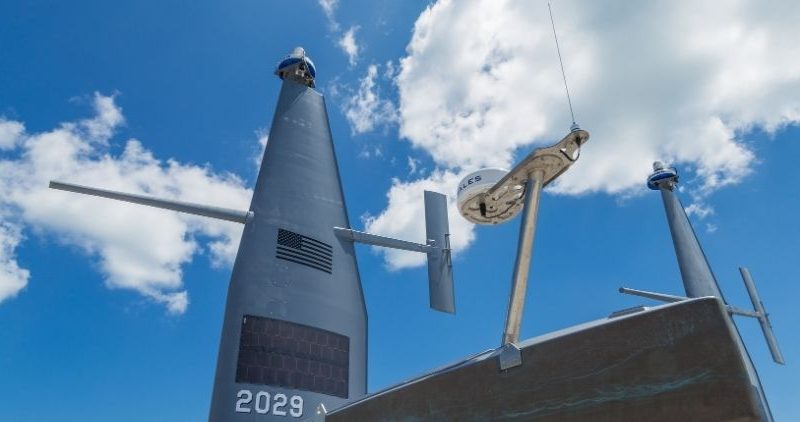Saildrone lands $60M to launch AI-powered maritime security hub in Europe

The Baltic, North Sea, and European Arctic waters face unprecedented threats, intensifying the need for continuous maritime domain awareness. Saildrone’s unmanned surface vehicles (USVs) address this challenge with extreme endurance capabilities, using advanced sensors and proprietary AI algorithms to monitor marine environments above and below the surface. These vehicles provide persistent, real-time surveillance of vital undersea assets such as fibre-optic cables and energy pipelines.
Today, Saildrone, a global leader in maritime autonomy, announced a $60 million investment round led byEIFO, the Export and Investment Fund of Denmark, bringing its total funding to $325 million. This investment will accelerate Saildrone’s European expansion, addressing urgent maritime security needs in critical infrastructure and broader defence applications. The funding will establish Saildrone’s new European headquarters and operational hub in Copenhagen, Denmark — a strategic location at the heart of northern Europe and a key player in NATO and EU security initiatives.
“I am thrilled to partner with EIFO and the Danish government to establish Saildrone’s European headquarters in Copenhagen, Denmark,” said Richard Jenkins, Saildrone’s founder and CEO. “Denmark’s unique geographic and political position at the heart of northern Europe makes it the perfect place to establish our European headquarters and operational hub. Working initially with the Danish Armed Forces, we plan to roll out Saildrone’s maritime intelligence services to multiple NATO countries during the course of the year. Our goal is to provide 24/7, year-round coverage for all critical infrastructure within the Baltic and North Sea, safeguarding these highly valuable installations for current and future generations.”
Saildrone was founded by British engineerRichard Jenkinsin 2012 in Alameda, California. Jenkins, who holds a mechanical engineering degree from Imperial College London, developed Saildrone’s core technology after spending a decade designing wind-powered vehicles to break the land speed record — a feat he achieved in 2009 in Nevada by reaching 126.2 mph.
Motivated by the potential to apply his patented wing technology to ocean exploration, Jenkins created Saildrone to build autonomous, wind- and solar-powered surface vehicles capable of collecting high-resolution ocean data in remote and challenging environments.
Powered by wind and solar energy, Saildrone USVs deliver persistent, cost-effective surveillance for defence, security, and intelligence missions without risking personnel. Each vehicle can patrol for over 12 months without refuelling, operating silently with a near-zero carbon footprint, addressing security and environmental priorities. Equipped with advanced sensors and communications systems, they support operations including illegal fishing detection, border enforcement, and strategic asset protection.
Saildrone’s USVs now operate in GPS-denied environments, using multi-sensor localisation (acoustic, inertial, and celestial navigation) to maintain functionality even when satellite signals are disrupted. Given the rise in GPS jamming and spoofing in contested regions, this capability provides a critical advantage.
Saildrone’s autonomous platforms have proven effective in harsh environments, including the Arctic and Southern Ocean, offering NATO allies like Denmark a force-multiplying solution for maritime situational awareness and operational readiness. The Voyager USVs reduce operational costs by up to 96% compared to manned patrol vessels while providing equivalent or superior coverage. This cost efficiency and sustainability align with Denmark’s green transition goals and EIFO’s mandate to fund innovative, eco-friendly security solutions.
The deployment of Saildrone’s technology aligns closely with the EU’s 2025 Action Plan for Subsea Cable Security and NATO’s Maritime Unmanned Systems Initiative. Both emphasise the need for AI-driven surveillance and public-private partnerships to protect Europe’s vital infrastructure. The data collected by Saildrone USVs will feed directly into these multinational defence frameworks, enhancing collective security across the Baltic-North Sea corridor.
“We are thrilled to invest in Saildrone and that Denmark has been chosen as the centre for Saildrone’s European activities. Saildrone is a leading company in a rapidly growing market, and access to this technology can become critical for both Denmark’s and Europe’s security. We expect Saildrone will impact both the Danish defence industry and Danish challenges with surveillance in the Arctic and counteracting sabotage in Danish waters — at a fraction of the cost of a patrol ship,” saidPeder Lundquist,CEO of EIFO.
Saildrone will deploy the first four Saildrone Voyagers in the Baltic Sea in June 2025 under contract to the Danish Armed Forces. By 2026, the company plans to scale to 50+ USVs across NATO for missions ranging from anti-submarine warfare to counter-drone operations.
As the hybrid threat landscape evolves, Saildrone’s persistent, AI-driven surveillance offers a paradigm shift in maritime security, delivering robust protection for Europe’s critical infrastructure while advancing sustainability and innovation.

Published on Other News Site
















